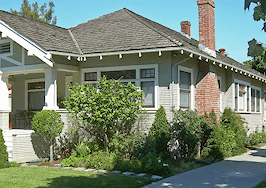The National Association of Realtors (NAR) Pending Homes Sales Index, a forward-looking indicator based on contract signings, declined 2.3 percent year-over-year in January, the 13th straight month of year-over-year declines.
 In the short-term, however, the Pending Home Sales Index increased 4.6 percent to 103.2 in January, up from 98.7 in December.
In the short-term, however, the Pending Home Sales Index increased 4.6 percent to 103.2 in January, up from 98.7 in December.
“A change in Federal Reserve policy and the reopening of the government were very beneficial to the market,” NAR Chief Economist Lawrence Yun said in a statement, referring to the month-over-month increase.
Yun also thinks it’s a trend that will continue in a positive direction.
“Income is rising faster than home prices in many areas and mortgage rates look to remain steady,” Yun said. “Furthermore, job creation will help lift home buying.”
Pending home sales increased month-over-month in every region that NAR tracks. The biggest gains were in the south, where pending home sales rose 8.9 percent.
Only the Northeast saw year-over-year growth, while the other three regions saw declines. In the Northeast, pending home sales are up 7.6 percent year-over-year.
Yun forecasts that existing-home sales will be around 5.28 million in 2019, down 1.1 percent from 2018. The National median home price is expected to increase around 2.2 percent, after rising 4.9 percent in 2018 over 2017.
Existing home sales, compiled by NAR, reached a three-year low in January.
Developing…












